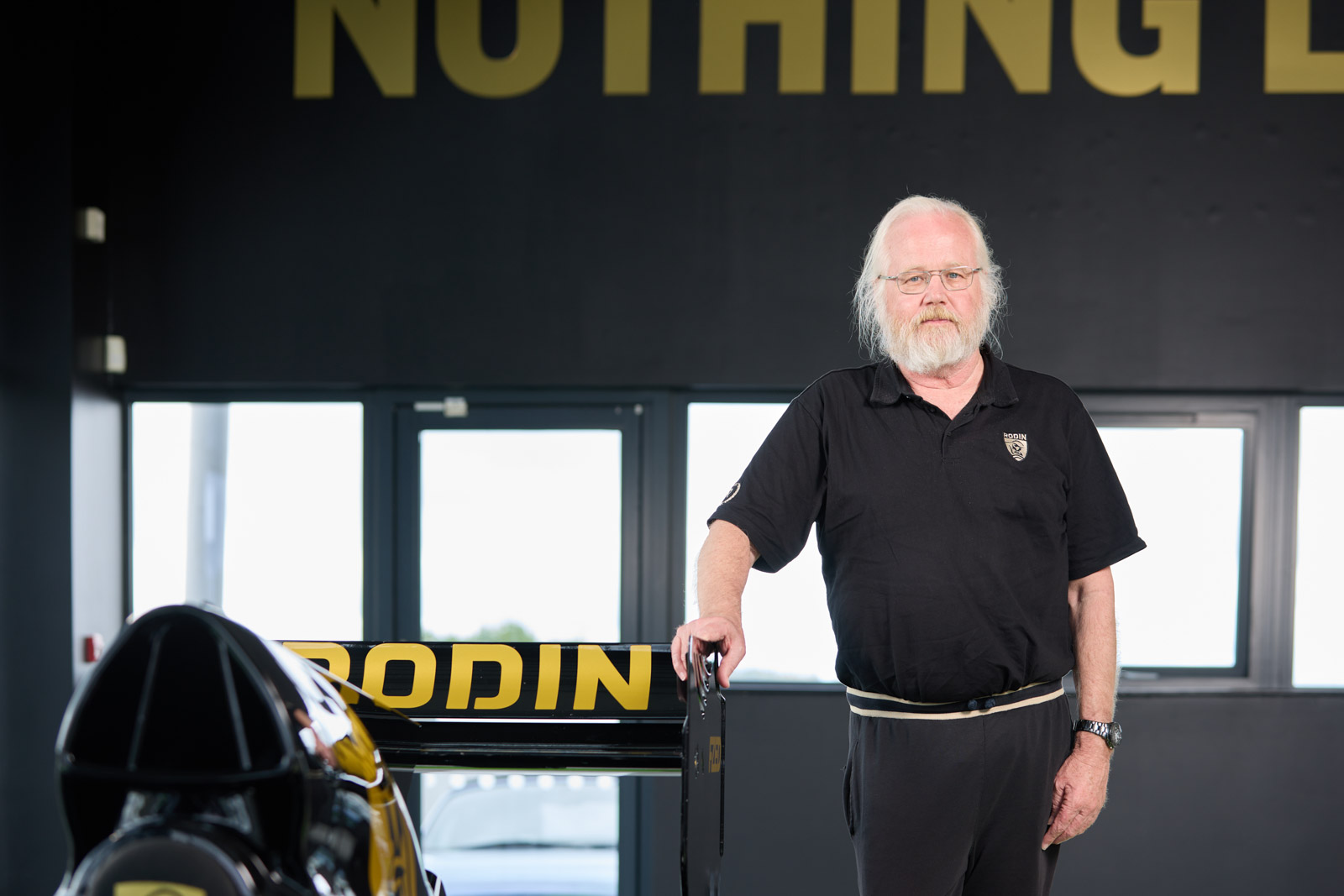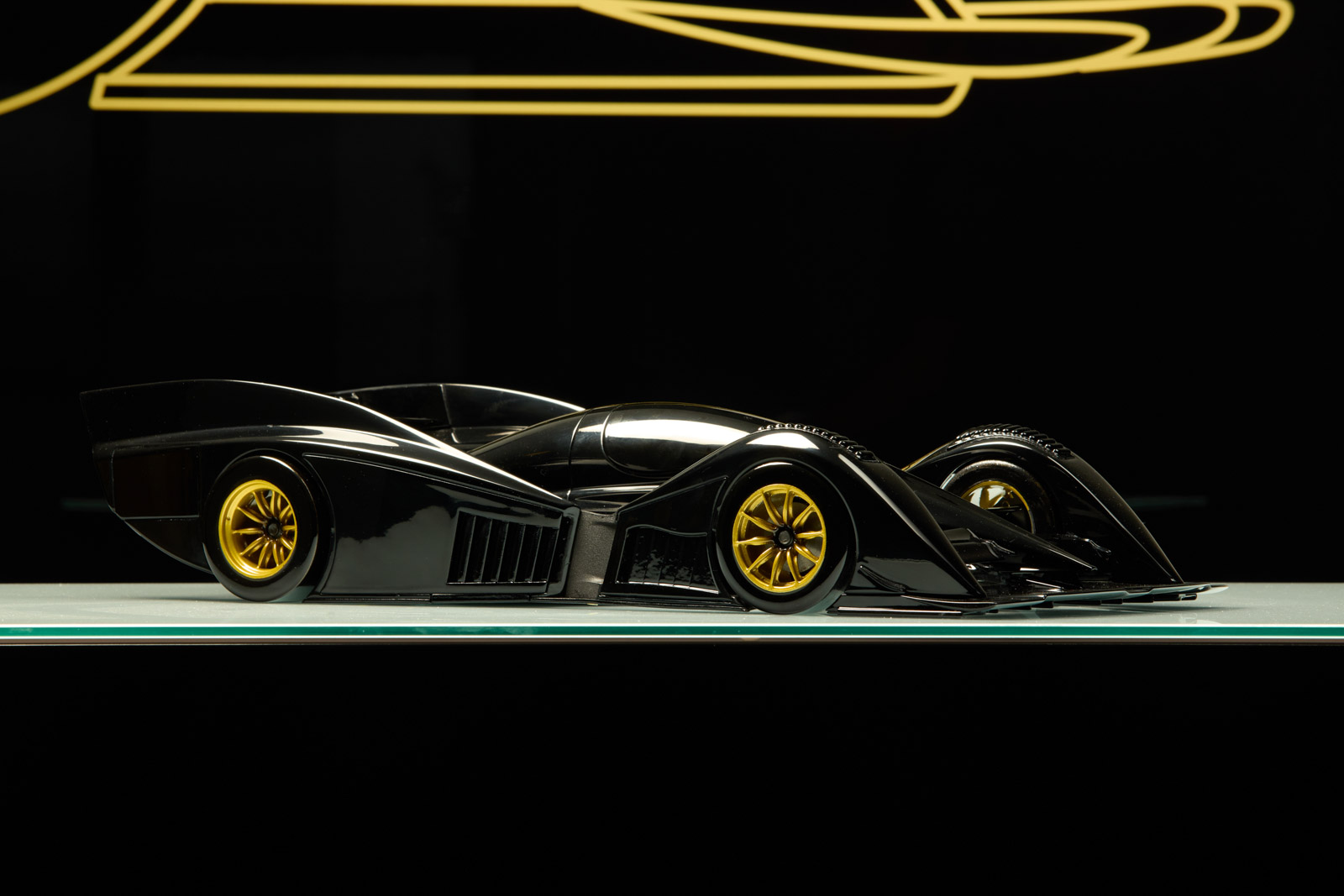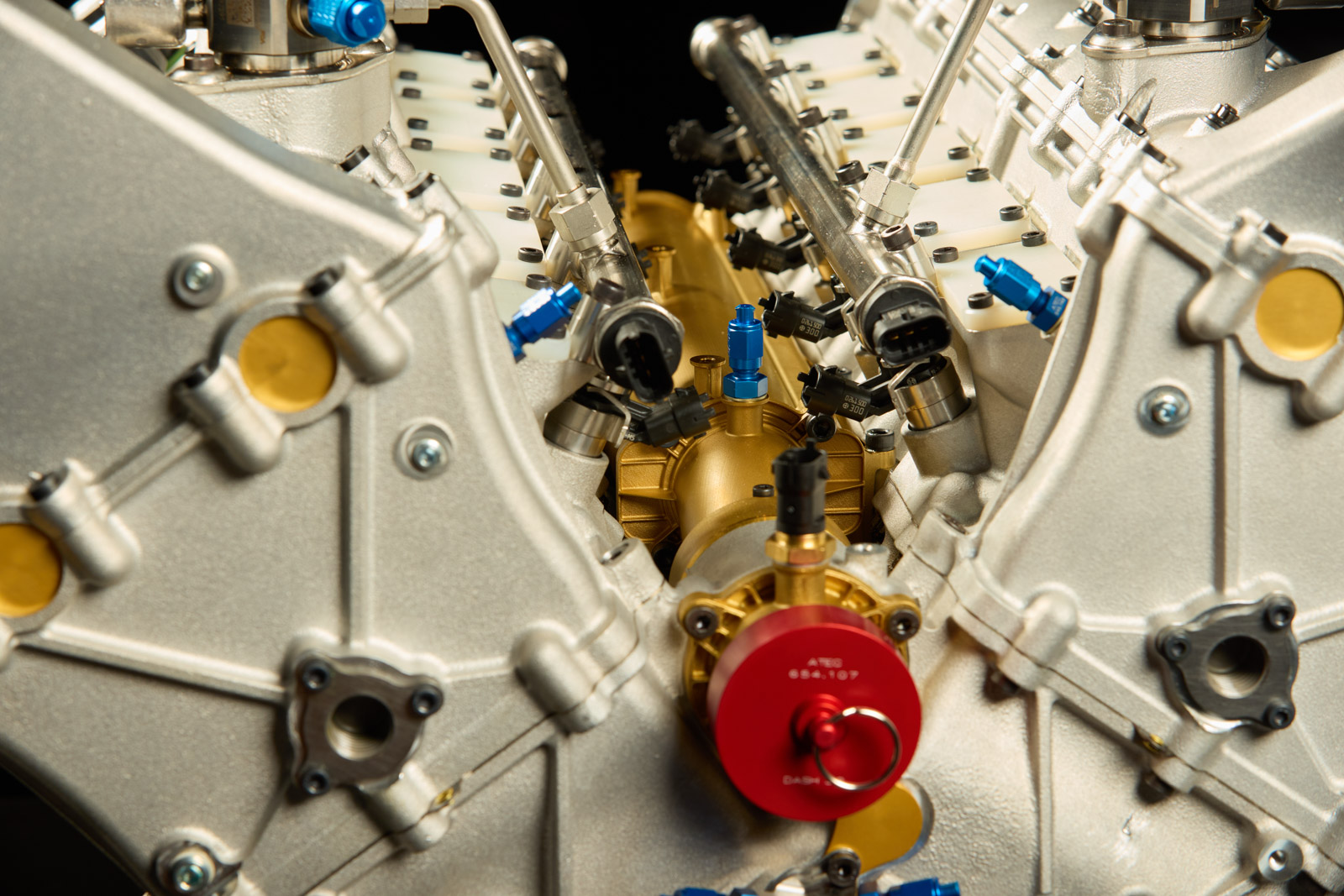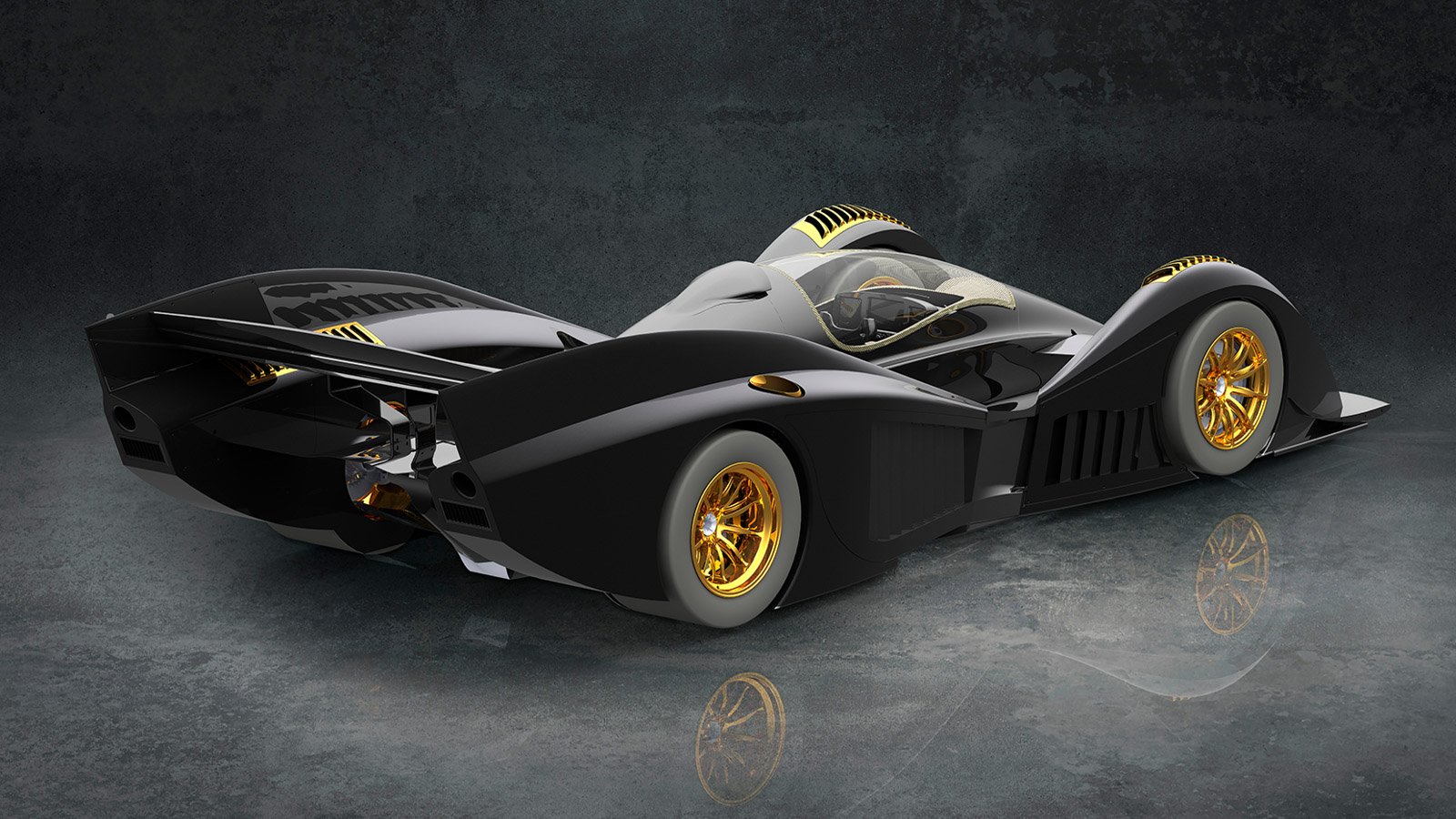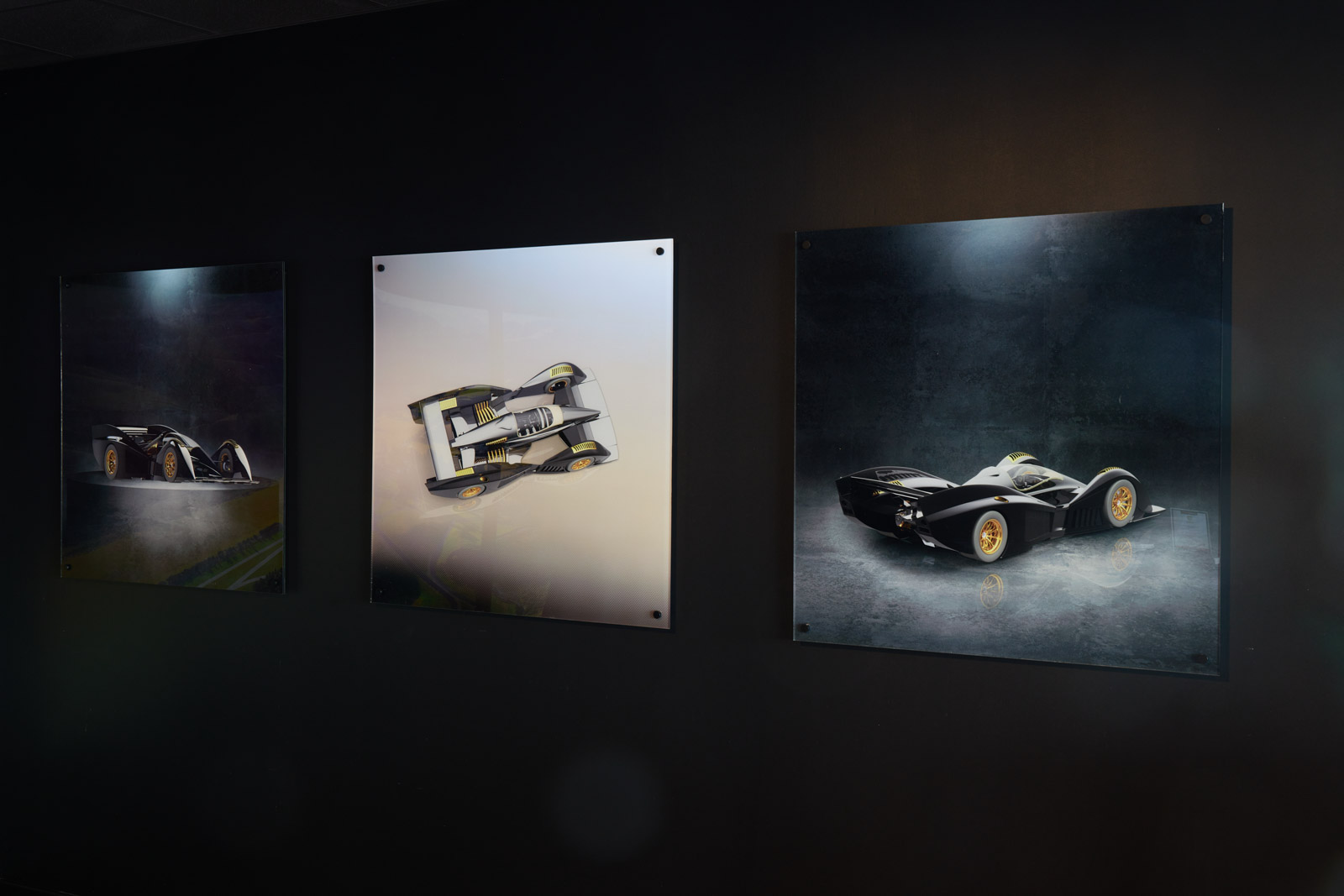We sit down with David Dicker, the man who owns Rodin Cars and is on a mission to build the world’s fastest car – the new Rodin FZero.
Powered by a bespoke mid-mounted, 4.0-litre hybrid V10 turbo petrol engine, the enclosed single-seater FZero weighs around 50kg less than a current Formula 1 car and has been developed “without the limitations of road or racing regulations” for customers who will each pay £1.8 million (AUD$3.1 million) for the privilege.
Company boss David Dicker, an Australian computer billionaire, says first deliveries could arrive as early as next summer, with the first batch limited to 27 units.
Speaking from a newly opened UK Rodin base at Donington Park circuit, Dicker adds that he expects the initial prototype to be running by Christmas.
Dicker, who came to prominence in the UK when he took over the defunct Lotus T125 single seater project and modified it extensively to create the Rodin FZed, told us that he had been working on the FZero “for a couple of years” but was encouraged to reveal details when Red Bull recently announced its Adrian Newey-designed RB17 track hypercar.
“That car gave us confidence,” says Dicker. “We figured that if they reckoned they could sell 50 cars costing around £5m (AUD$8.6m) each, there has to be a market for cars like ours. Now all we have to do is make a car people will like.”
Dicker, an inveterate car collector and keen Ferrari racer, has closely controlled every detail of the new car, which will be made at a purpose-built factory in New Zealand’s South Island, where Rodin is based.
Almost everything will be made in-house, Dicker said, apart from the bespoke V10 engine, which will be created and developed by Lincolnshire-based race engine expert Neil Brown Engineering.
It has maximum power of 735kW at 9000rpm and 1026Nm of torque at 7250rpm, combined with a 130kW electric motor that acts as starter, alternator and power regenerator and “helps fill in the torque gaps”.
The total power of 865kW drives the rear wheels through an all-new Ricardo-built eight-speed automatic gearbox.
Dicker said the FZero’s chassis uses an F1-like carbonfibre tub chassis and a race-style all-independent suspension that includes special hydraulic height-adjusters that maintain ride height as aero loads build with speed.
The enveloping body, developed using CFD, will provide much better aerodynamic efficiency and stability than an open-wheeler, Dicker explained. The closed cockpit canopy will protect the driver from the high-speed buffeting that affects open-wheelers and detracts from the driving experience.
Straight-talking Dicker is unashamed about taking the name of a famous sculptor, whose best-known work is a statue called The Thinker, for his car company. “A car is entirely a product of human thought,” he said, “and all those animal names people use are ridiculous.”
When did you decide to make the ultimate car?
“I decided in about 2016 that I had the money to do it, no matter what. I had to know I had a decent buffer, because I wasn’t going to give up my lifestyle to do it. A lot of guys get into projects like this and spend every dollar they have. If it fails, they’re screwed.”
Why launch now?
“Red Bull’s RB17 was probably the catalyst. We’ve been working on this car for years but figured that if they think there’s a market for 50 cars at £5 million, then there’s got to be room for us. They gave us confidence.”
How can you afford the capital outlay it takes to build a $3 million car?
“You’ve got to make money to do it. I started Dicker Data, a computer distribution business, in 1978, and it went public in 2011. Our original target was to deliver 10 computers a month. I always thought it would work, but it has done a fair bit better than I expected. Today we do $8-9 million worth of business every single day.”
In a way, your $3 million per car seems almost cheap. How can you do it for that?
“One big reason is that we’re going to make everything ourselves — all but the springs, seals and bearings. We even make our own bolts. We will do the engine castings and make the crankshaft. The crankshaft is currently made by a Formula 1 supplier and costs £23,000 (AUD$40,000). But the billet to make that piece costs £795 (AUD$1380). We can save a lot just there.”
Are aerodynamics the reason for having an enclosed cockpit?
“It’s a no-brainer, but there are other reasons too. Open-cockpit cars can be tricky to drive, because your head moves about so much at speed; with a canopy, you can stay serene. And because the cabin is air-conditioned, you can run the car in any market. That’s a big problem in the Middle East, say, or even Australia.”
The FZed, the car you make now, is an open-wheeler. Why change to an enveloping body with the FZero?
“Mainly because a full body means you don’t have to deal with those whirling monstrosities on each corner, the wheels. F1 would have gone to full bodies years ago if regulations had allowed.”
A car that looks this good raises the question of a road version. Will you build one?
“We’ve talked a lot about road cars, and we’re breaking our necks to do one. But let’s get this first batch of FZeros built and delivered first, and then we will see.”
Steve Cropley




